Doctoral promotion. Buddhist adaptations
- I have become a witness of the struggle of traditional and homogenous Buddhist monasteries with the contemporary consumerism and technological development – this is what dr Malwina Krajewska, Ph.D, one of the newly promoted Doctors of philosophy says on her work on doctoral dissertation.
Due to the pandemic, this year's doctoral promotions could not be held in their traditional ceremonial way. Therefore, we decided to make the academic community more familiar with a few of newly promoted Doctors of Philosophy.
One of them is dr Malwina Krajewska, a postgraduate in the Faculty of Philosophy and Social Sciences, today a lecturer in the chair of Cultural Research in the Institute of Sociology, NCU.
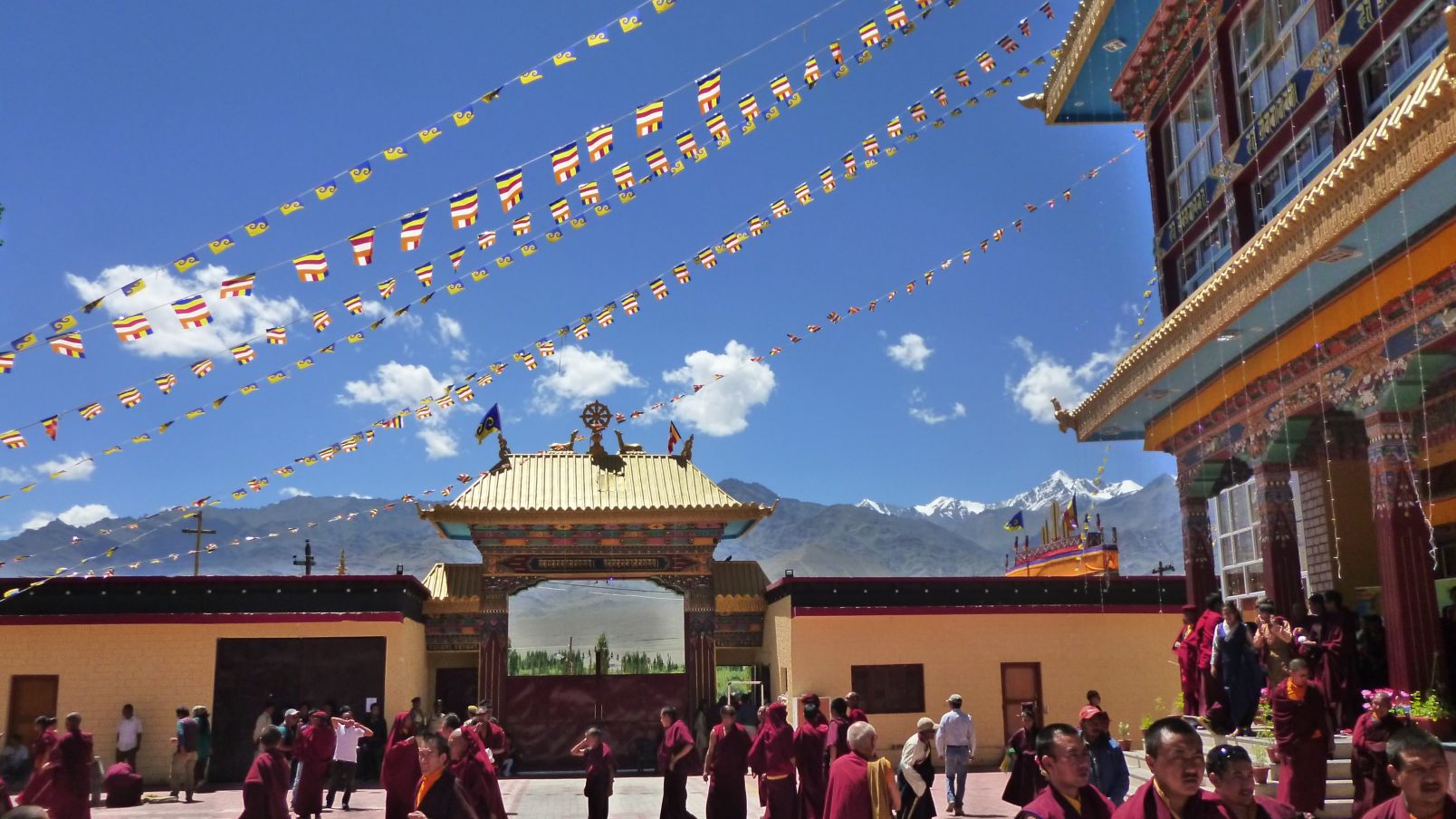
Last year, she defended with honors her dissertation "Modernization, migration of tradition, integration. Contemporary Tibetan Buddhist festive ceremonies in exile" written under the supervision of Tomasz Szlendak, prof. dr habil. from the Institute of Sociology, NCU.
She based her work on the material collected during six years of subsequent field research in Buddhist monasteries on India and Nepal. Altogether, she made six research journeys to Katmandu, Ladakh, Kampong, New Delhi, and Bodh-Gaya – each lasted between three weeks to two months.
Dr Malwina Krajewska is a practicing Buddhist herself, and she has been researching Buddhism already since her sociological studies at the University of Gdańsk. At that time, she took part in several conferences and symposiums both in Poland and abroad, she worked in research grants as a field researcher, analyst and coauthor of methodology. In 2016, her book "Diamond Road Buddhism in Poland. Narration about the Beginnings" was published.
- While working on my book, I had an opportunity to watch how Buddhism resonates with the western culture, how it adapts and changes under the influence of new social and cultural conditions. This inspired me to further search: I got interested in how the Tibetan Buddhism was adapting to and changing in exile Asian countries – explains dr Krajewska.
Ceremony during emigration
In her doctoral dissertation, she focused on the transformations taking place within Karma-Kagyu, one of four schools of Tibetan Buddhism. She was particularly interested in which Buddhist practices and institutions were being reconstructed on emigration and how the institutions processes of tradition modernization and migration were proceeding. She carried out her field research in Nepal and India, which have offered shelter to hundreds of thousands of Tibetan refugees.
I was wondering how secular people, monks and nuns and Buddhist teachers were practicing in the new sociological-cultural-and- technological conditions. How did they pass on their knowledge to the younger generations, how they were adapting the traditional knowledge to the new social context, and how they were reacting to new technologies – explains dr Krajewska. – Generally speaking, I was researching how Tibetan Buddhism was changing and modernizing in exile. How the particular ceremonies were supporting the maintenance of the social order, and how they were affecting the functioning of Buddhist monasteries.
Dr Krajewska carefully watched those festive ceremonies and rituals.
- They are manifestations of heritage and tradition rooted in Tibetan past, a bright example of cultural heritage - explains dr Krajewska. - I called those festive ceremonies my "labs" as they have very clear borders of time and space, they are episodical and thematic, and, what matters, they differ substantially from Buddhist daily life. They are a form of time capsules which intensify both ritual and social activity.
As early as during her initial journeys dr Krajewska noticed that festive ceremonies significantly unveiled a more complex issue monastic tradition in exile. Therefore, she got deeper and deeper into how monasticism is constructed by both sacred and secular practitioners. She decided to take a closer look on the role of monasteries in festive ceremonies.
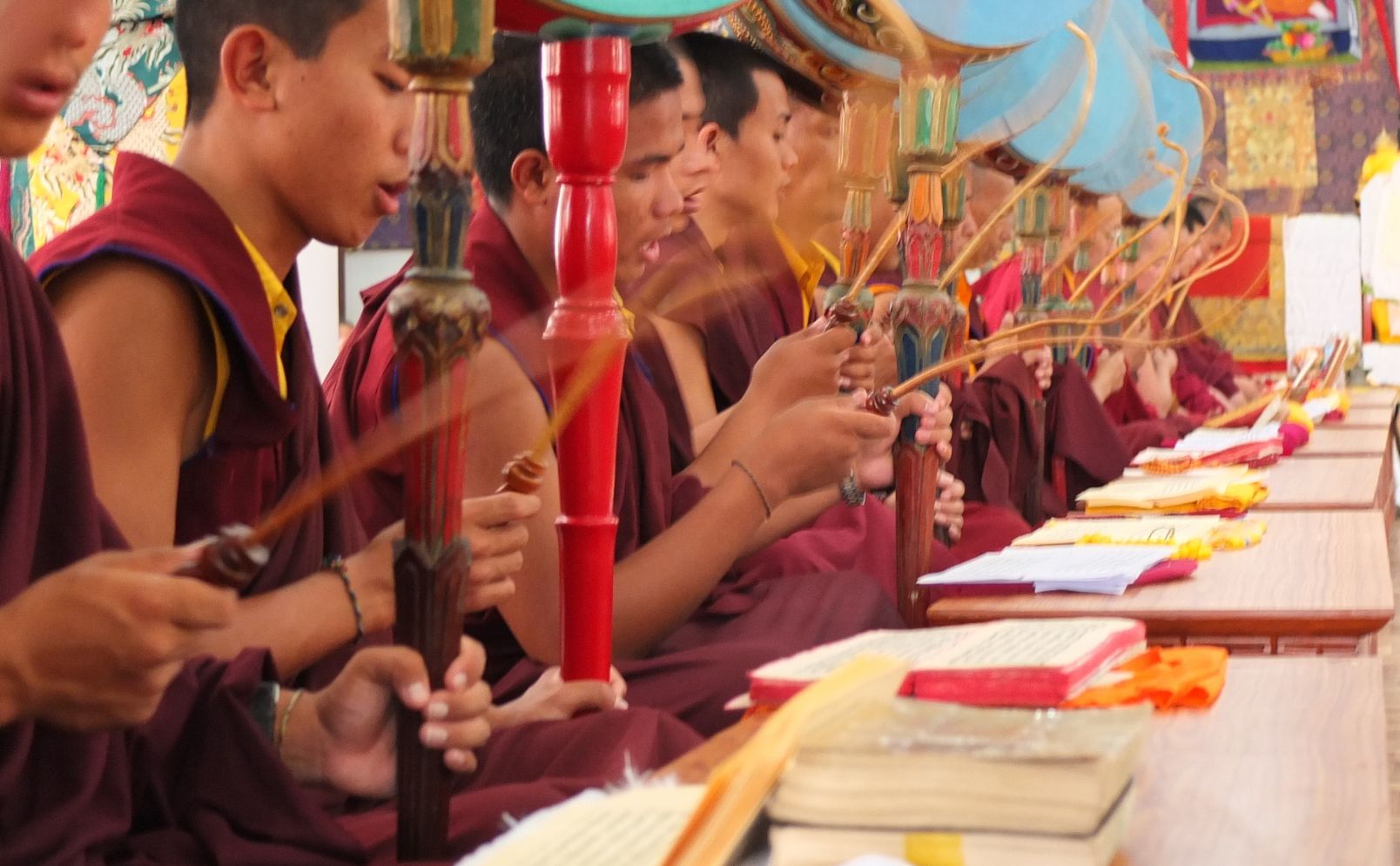
- It turned out that it was just Buddhist masters, lamas, monks and nuns that were the major organizers of celebrations. I wondered if three existed any contradictions between the current Buddhist practice created by monks and the one settled and defined in monastic institutions which functioned according to the tradition of Karma Kagyu – explains dr Krajewska.
Tradition vs. Modernity
During six years, she travelled to India and Nepal nine times. The beginning of her research coincided with the tragic earthquake, which happened in Nepal in 2015. Dr Krajewska was then involved in organizing aid to the victims of the disaster in Katmandu within the program Stupa House Foundation and Dhango Sheydrub Ling Foundation
During the next few years, she watched and participated Losar - Tibetan New Year celebrated in Kampong in India, the cremation ceremony of Buddhist master XIV Shamar Rinpoche Mipham Chokyi Lodro, which took place in Katmandu, the first ceremony commemorating his death organized in New Delhi, the second commemorating ceremony which took place in Katmandu, Rabne, which is a monastery consecration ceremony in Leh, Ladakh. She also participated several times in Kagyu Monlam Chenmo – a festival of good wishing organized every year in Bodh Gaya, in the place of Buddha's enlightenment in India.
I became a witness of how traditional, homogenous and hermetic Buddhist monasteries were struggling with the contemporary consumerism, globalization and technological development. I managed to see the adaptation of many-century Buddhist tradition in the countries neighboring with Tibet – says dr Krajewska. – Indeed, the processes of transformation of religion and tradition have been a subject of the interest of sociologists and anthropologists for decades, yet the issue I have been researching is very exceptional. It is an example of rapid cultural changes taking place within the last fifty years, since the beginning of the 60's in the 20th century, when a lot of Buddhist masters, monks and secular people emigrated under the siege of Tibet by China.
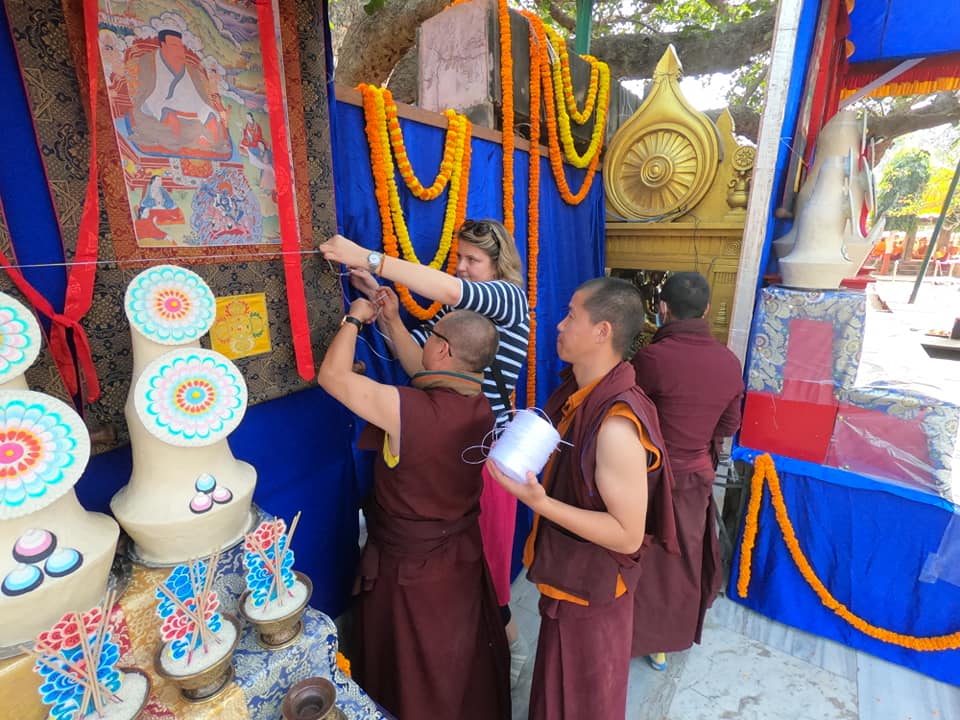
- Among Buddhists there exists an assumption that Buddha's teachings are very flexible and easily adapt to the culture of the countries where they settle down. Without any interference into fundamental concepts. Therefore, very popular is an adage that "dharma" (Buddha's teachings) is like a diamond which shines and reflects the background where it rests – says dr Krajewska. - Yet, the outcomes of my research and analyses generate certain anxiety, they show that there is a risk of losing contact with tradition. Frictions and mediations between Tibetan monastic tradition and contemporary consumerism, globalization and technological development set a vision of very difficult and restless future. This future is restless due to a limited and still decreasing number of Buddhist teachers raised or born in Tibet, and due to a limited number of traditional monastic institutions. This future is difficult as the outer world provides a lot of dispersion and obstacles which tempt monks and nuns with visions of a beautiful, pleasant and abundant life shown by social media or Bollywood films. The future is not easy as the narration which dominates in media and in the Internet urges to define once again one's values, priorities and life aims so that one follows an individual path to self-fulfillment. This narration entirely contradicts the values which have been appreciated and respected in Tibetan Buddhism.
Lambu in monastery
Before her field research, dr Krajewska spent a lot of time on completing her knowledge on historical and philosophical issues. She tried to find out as much as possible about the existing rules of behavior and dress code in monasteries.
- Despite numerous cultural, racial, and gender differences as well as initial resistance and difficulties, I was relatively quickly (already during my first field research) accepted by the monks. I suppose that one of the recognizable aspects which helped me overcome the barriers was the fact that I am tall and a Buddhist – says dr Krajewska. – I soon received a nickname Lambu, which means a tall person in Hindi. So far, this nickname has been used not only by the monks but also by the Rinpoche and lamas.
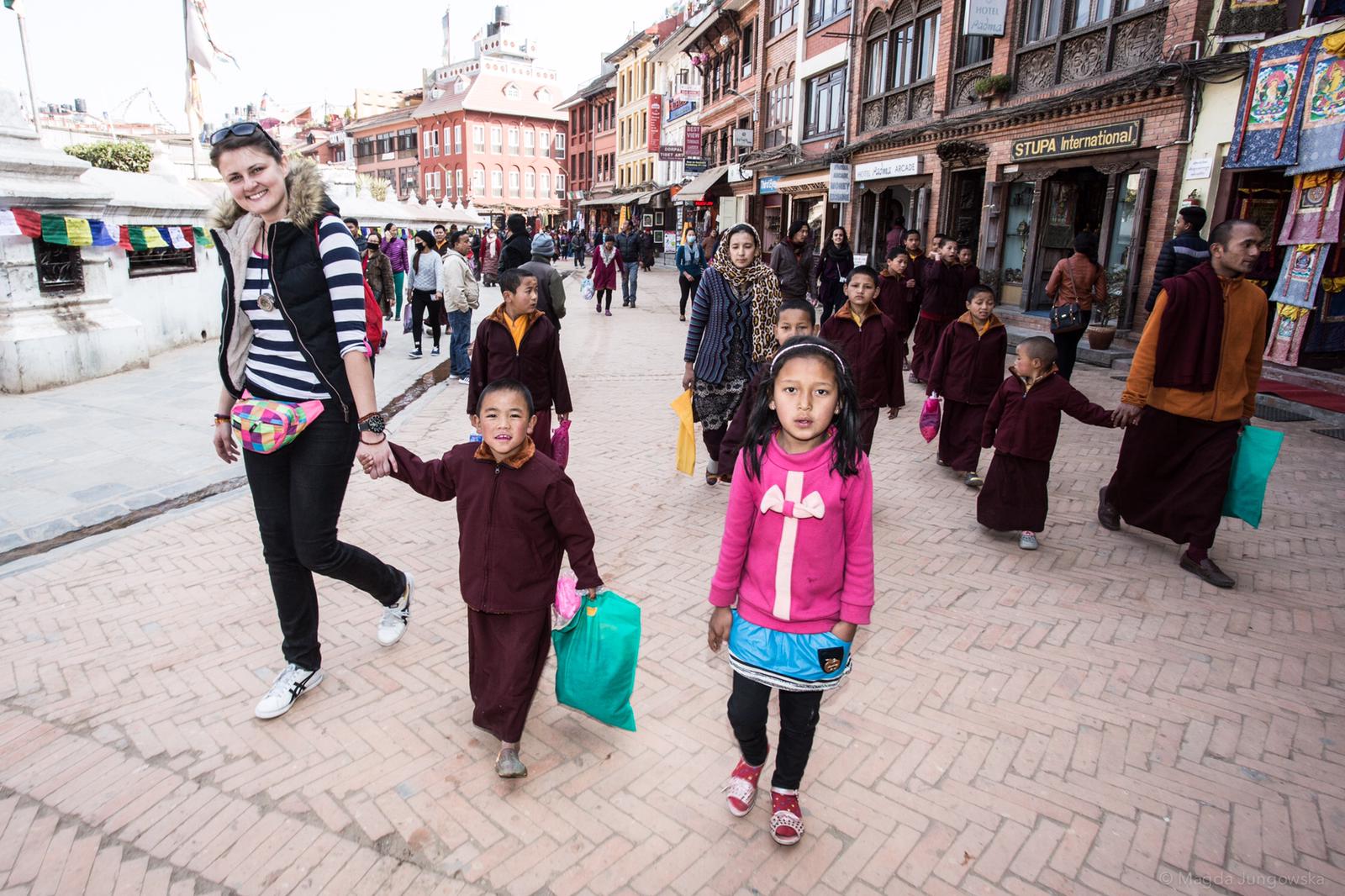
During one of her last visits to India, dr Krajewska gave her doctoral dissertation as a gift to XVII Karmapa, the supervisor of Karma Kagyu line. This was a form of gratitude and thanks as it was, he that in 2013 agreed for the field research to be carried out in the monasteries under his supervision. In 2017, he agreed to have an interview with her.
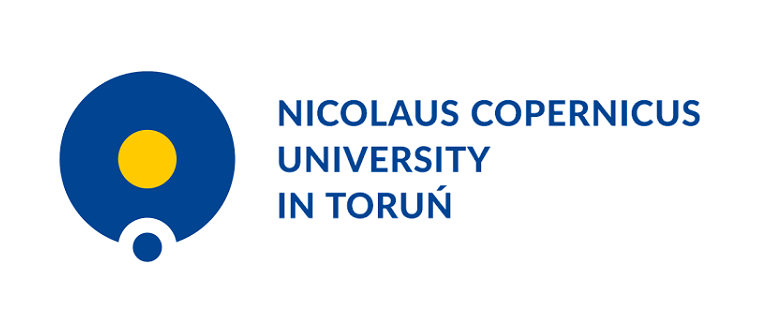 NCU News
NCU News






 Social sciences
Social sciences